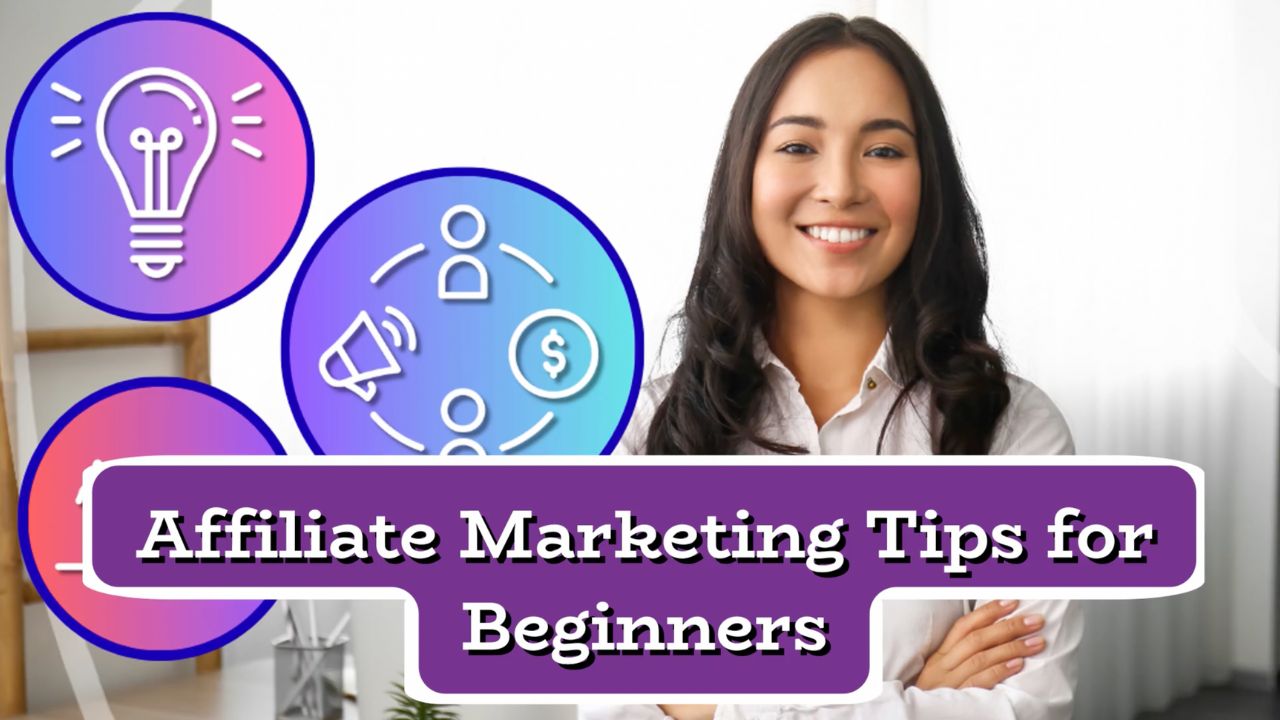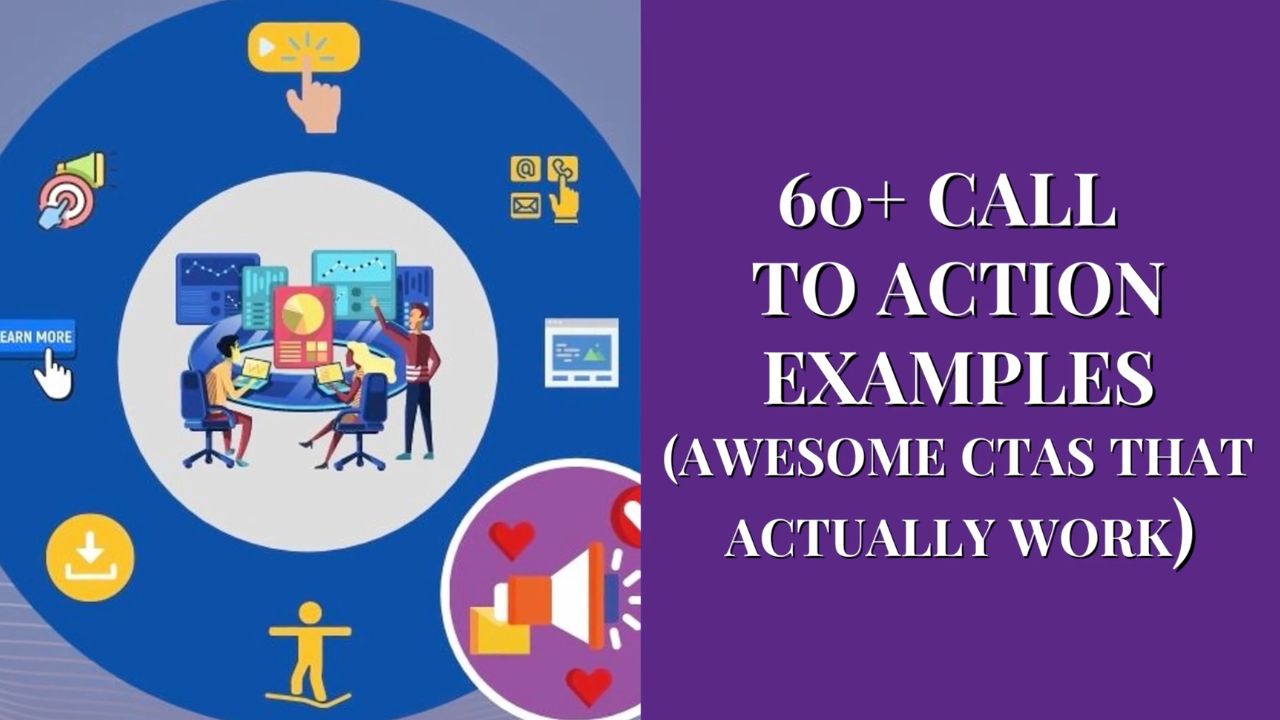At face value, paid ads on LinkedIn can be more expensive than other platforms.
But for B2B, they can be a lot more effective:
- Conversions can be higher (because of the quality of LinkedIn's users along with the targeting abilities)
- The CPA (cost per action) can be lower than elsewhere.
In other words, it can cost less to convert someone.
So where do you start?
Let's find out how to create a paid ad on LinkedIn...
Before You Get Started
There are a couple of things you need to have in place before you can create paid ads on LinkedIn, namely a LinkedIn Page, and an account with their advertising platform, referred to as Campaign Manager.
Create a LinkedIn Page
At face value, ads on LinkedIn can be more expensive than elsewhere. But with generally higher quality prospects, CPAs can often work out lower.Click To Post OnIf you don’t yet have a LinkedIn Page, here’s how to quickly set one up.
Click here to start creating your page, or select Create a Company Page from the Work menu in LinkedIn.
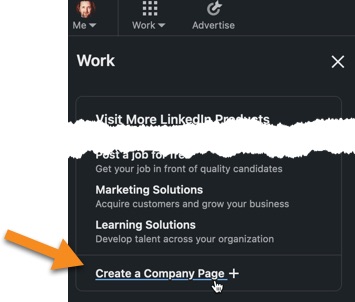
Click the Company option, and then enter the relevant details, such as the name of your business, your website, a suitable logo and your tagline.
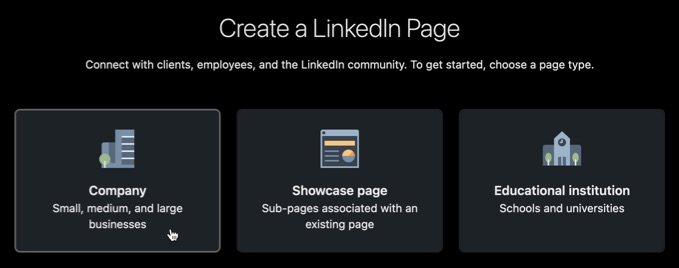
Once completed, click the Create page button at the bottom.
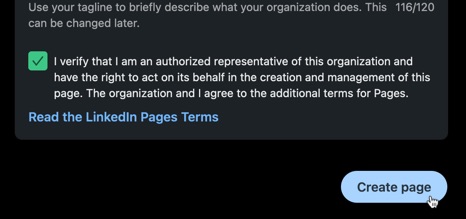
While just having a page is enough to get started with advertising on LinkedIn, it’s recommended to post to the page regularly and build up your audience.
This will reward you longer term with lower ad costs via an improved relevance score that “rewards marketers who regularly post content that earns lots of clicks, likes, comments, and shares”.
To start advertising on LinkedIn, you just need a LinkedIn Page and a Campaign Manager account. You can then start creating ad campaigns.Click To Post OnNext, you need to…
Create an Account with Campaign Manager
If you don’t yet have an account, create a free account by simply clicking on Advertise on the top right of LinkedIn’s menu.

You can create multiple accounts as required.

Give the account a name, select a currency you want to use for your ads, associate it with your LinkedIn page, and click Save.
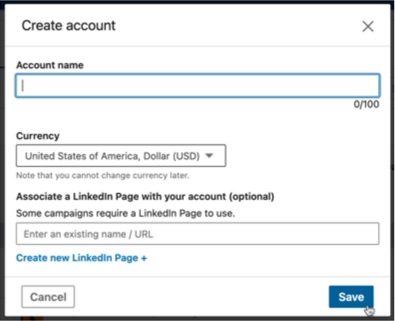
With your LinkedIn Page and Campaign Manager account now sorted, you can proceed to create your first ad on LinkedIn.
Just follow these 10 steps…
10 Steps to Creating a Paid Ad on LinkedIn
1. Sign Into LinkedIn’s Campaign Manager
To sign in, just click Advertise via LinkedIn’s top menu, as described above for creating a Campaign Manager account.
2. Create a LinkedIn Ad Campaign
Click the Campaigns tab, then click Create and select the Campaign option.

Campaigns in LinkedIn are now grouped into Campaign Groups. Stick with the auto-created default campaign group, or create (or choose) a different one.
Click Next.
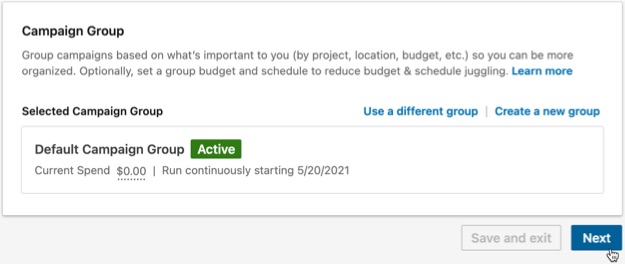
3. Choose Your LinkedIn Ad Objective
Most online ad platforms like Meta, Google and X are objective-based, and LinkedIn is no exception.
On LinkedIn, the available objectives are grouped under Awareness, Consideration and Conversions.
Pick the most suitable objective for the type of ad you want to run, e.g. Website conversions.
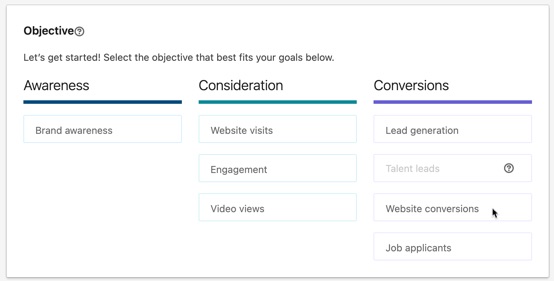
Note that for the Website conversions objective, conversion tracking needs to be enabled on your website.
That simply means your website needs to be able to report back to LinkedIn that a conversion has occurred, so that the platform can:
- Report conversions in your stats
- Adjust who your ad is shown to based on the characteristics of people who have converted, so it’s shown to more people just like them and in so doing, increase your conversions over time.
Conversion tracking for LinkedIn is done via their Insight Tag, which is essentially some special code added to your website. You’ll find a full guide on setting up the Insight Tag on your website here.
4. Choose Who Will See Your LinkedIn Ad
The next step for creating your paid ad on LinkedIn is all about audience.
In other words, who do you want to see your ad?
In terms of whether your ad campaign succeeds or fails, accurately targeting your ad is one of the most important factors.
That means carefully considering who is most likely to find your ad of relevance to them, and who is most likely to take action as a result of seeing it.

LinkedIn provides options such as targeting people who:
- Live in (or were recently in) specific geographic areas, whether whole countries or specific towns or cities
- Speak a specific language
- Have particular job functions
- Are part of a lookalike audience
- Have taken certain actions on your website
- Work for a particular company
- Have certain demographic attributes (such as age, gender and educational background)
- Have particular interests or traits
5. Choose the Type of LinkedIn Ad
LinkedIn provide a variety of ad formats to choose from, including:
- Single image ad—shows in the news feed with a single image
- Carousel image ad—same as above, but with multiple images that the user is able to swipe through
- Video ad—similar again, but with a video instead of an image
- Text ad—ads for the right-hand side on LinkedIn, or at the top of the page
- Spotlight ad—ads on desktop that are personalized for each user
- Message ad—delivered to your target audiences Messaging inbox
- Conversation ad—similar to the Message ad format, more specifically designed for starting conversations with prospects
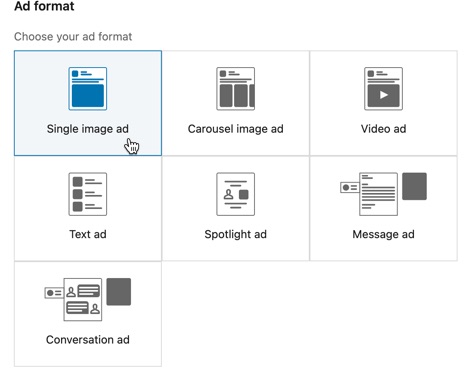
Choose a format to get started with. In time, test against other formats to find what works best for you.
6. Choose the LinkedIn Ad Placement
By default, LinkedIn will pre-select the LinkedIn Audience Network option which places your ads on other sites as well as LinkedIn itself.
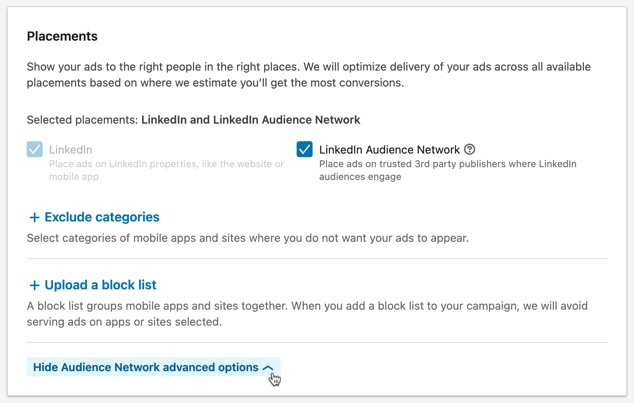
While you’ll be encouraged to select this option, it’s not necessarily in your best interests in terms of the effectiveness of your ads as people will be clicking on sites outside of LinkedIn’s direct environment.
It’s worth testing this option for your own campaigns to discover what difference it actually makes to things like conversions and your ad costs.
7. Set Your Budget and Schedule
You can set either a daily or lifetime budget for your ads, or both.
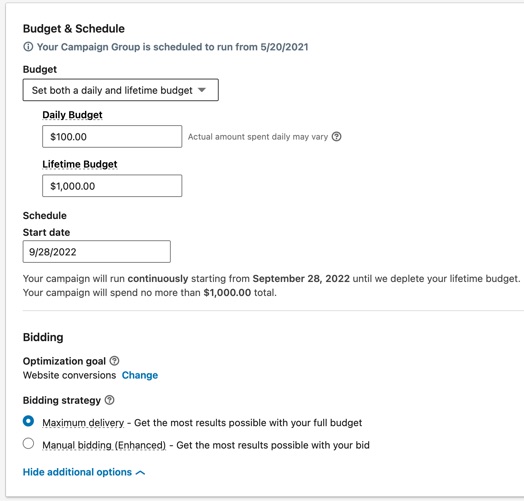
In addition, set when you want your ads to start and choose your preferred bidding option:
- Maximum delivery—LinkedIn will set your bid automatically to get the most actions out of your available budget
- Manual bidding—set the bid manually, though note that LinkedIn can adjust your bid up to 45% higher to help maximize results
8. Specify One or More Conversions (Website conversions objective only)
If you picked the Website conversions objective, LinkedIn needs to know which conversion(s) are relevant to your campaign.
![]()
If you haven’t set up a relevant conversion in Campaign Manager, click the Create new conversion link.
You can also do this via Account Assets > Conversion Tracking on the Campaign Manager menu (which is where you can also see your conversion data in future).
![]()
More information on setting up a suitable conversion can be found in our previous post on LinkedIn’s Insight Tag. Skip step 2 (just click Next step) in the conversion setup process for now, as your campaign hasn’t yet been saved to be able to select it.
Once added, you’ll be able to click Next and get started setting up the ads themselves.
![]()
9. Add Ads to Your LinkedIn Campaign
Finally… you get to the point where you can actually create your ads!
You can select an existing post from your LinkedIn ad to use as the ad, but it’s usually preferable to create a specific ad.
To do so, click the Create new ad(s) option, and follow the instructions provided, depending on the ad format you previously chose.
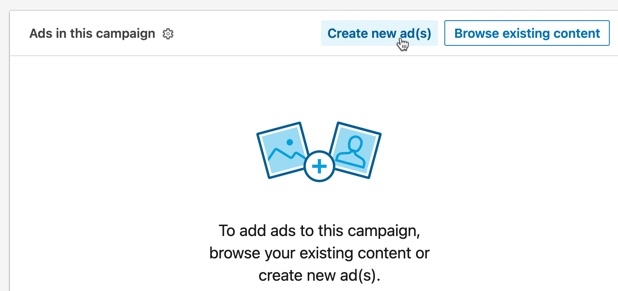
For best performance, create at least a couple of ads to run in your campaign. This means your campaign can be optimized over time, with better performing ads being shown more often.
10. Review and Launch
With your ads now set up and ready to go, the final step is simply to review all your settings, and click to launch your campaign.

Frequently Asked Questions
How do I create a LinkedIn Page for paid ads?
To create a LinkedIn Page, visit LinkedIn's Create Company Page link and fill in business details.
How can I start creating a paid ad on LinkedIn?
First, create a LinkedIn Page and an account with Campaign Manager, then proceed to create your ad campaign.
What are the steps to create a paid ad on LinkedIn?
Sign in to Campaign Manager, create a campaign, choose an objective, target your audience, select an ad format, set budget and schedule, specify conversions, add ads, and review before launching.
To Conclude
For those selling B2B, a LinkedIn ad campaign can be very powerful.
And now you have a simple to follow 10-step plan that shows you exactly how to create a paid ad on LinkedIn.
To significantly improve the performance of your ads over time, keep testing everything, from the ads themselves to where you send the traffic.Click To Post OnFor best performance, remember to keep testing everything, from your ads to where you’re sending the traffic. For conversions specifically, you can find a full guide to conversion rate A/B testing here.


